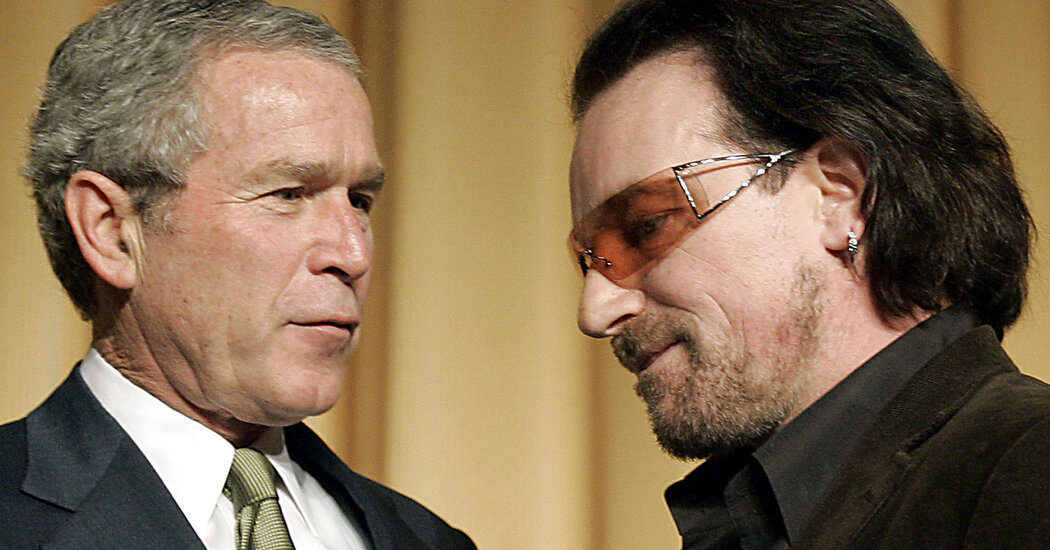Here’s something I don’t write about very often: a situation where an unpredictable and seemingly irrational politics saves millions of the poorest and most vulnerable people on the planet.
In a recent blog post, Justin Sandefur, a senior fellow at the Center for Global Development, a Washington, DC-based think tank, examined the records of the President’s Emergency Plan for AIDS Relief (PEPFAR). The program, launched by President George W. Bush to pay for antiretroviral drug treatment for millions of HIV-positive people in sub-Saharan Africa and the Caribbean, is now considered one of the most significant foreign aid efforts in U.S. history , notable for its generosity and its effectiveness.
In the face of the advice of many experts at the time, setting it simply flew.
“The conventional wisdom in health economics is that shipping anti-AIDS drugs to Africa is a waste of money,” Sandford wrote. It’s not that the drugs don’t work: Antiretroviral therapy has revolutionized HIV/AIDS control and has the potential to save the lives of those infected and prevent new infections. But the drugs are expensive, so experts say it would be more efficient to spend aid money on prevention. Money spent on condom distribution, awareness campaigns, or antibiotics to treat bacterial infections that more easily transmit HIV can save more lives per dollar than treatment, data show.
Brown University economist Emily Oster, who is now known for guiding parents in their decision-making, wrote a famous 2005 Forbes column titled “Cure HIV Doesn’t Pay Off,” She wrote, “As callous as this sounds, after comparing the years saved by other interventions such as antiretroviral drugs and education, I find that treatment is not an effective way to fight epidemics.”
Like many other economic experts, she believes policymakers face two constraints in their work: a massive global health catastrophe, and limited budgets to address it. And because treating existing HIV/AIDS patients is much more expensive than preventing new infections, the stark conclusion is that the best way to save as many lives as possible is to focus on prevention—despite this It actually means letting the infected die.
As it turned out, that argument was based on false assumptions. In fact, the Bush administration is willing to find funds for treatment that would otherwise never go to prevention.
The Bush administration has been the target of ongoing political lobbying by interest groups and activists such as U2 frontman Bono and Franklin Graham, son of the Reverend Billy Graham. Their reasoning was primarily moral rather than economic, and they emphasized the plight of those in need of treatment. They argue that the richest country in the world is wrong to let poor people die if antiretroviral drugs exist.
So it turns out the problem was no Just a dollar for whether treatment or prevention is the most effective, but whether treatment or prevention is the most politically persuasive allocate more dollars. On the latter issue, therapy wins.
Bush created PEPFAR, a new multibillion-dollar program to fund AIDS treatments in poor countries. Not only did it end up saving lives, but it cost less than the original cost-benefit analysis suggested. Over the course of the program, the cost of HIV treatment dropped rapidly—a change that may be partly due to the new demand PEPFAR created for the drugs, especially the cheaper generic versions that came out a few years later.
Sometimes the most effective is not the most effective
When I asked Sandefur about the broader lesson, he said that sometimes an effective, easy-to-implement solution may be the best option, even if it contradicts a cost-benefit analysis.
“For me, school feeding is very close to home, and I do a lot of work in education, and I think it’s well proven to work,” he said. “They help kids learn. They help make more of children going to school. Clearly, they help improve nutritional outcomes.”
But programs like India’s lunch program, which feeds more than 100 million schoolchildren every day, often fall short in cost-benefit analysis, as other programs are seen as more effective ways to improve educational outcomes.
highlight science
There is another lesson from the PEPFAR case: Sometimes politics matter more than economics.
Voters supporting HIV treatment include evangelical groups that have significant political influence within the Republican Party. Having Franklin Graham on the phone with Bono might have gotten the Bush administration’s attention more easily, but it also lowered the political cost of directing U.S. government money toward a massive new foreign aid program.
In political science terms, saving the lives of HIV/AIDS patients has better “salience”: activists become emotionally connected to the cause, making it their priority.
My anecdotal experience clearly demonstrates this: I was a student of that era, and I remember many heated debates among my classmates about how best to provide treatment to people in poor countries. I’m sure all of them would support precautions if asked, but that’s not where their energies are focused. Much of the excitement and sense of urgency has centered on the problem of getting medicine to people who would otherwise die. That felt like an emergency.
So perhaps the bigger lesson here is that policy, at the end of the day, is not divorced from politics. This means that the political costs and benefits often outweigh the economic costs—even if it seems irrational.
Thank you for being a subscriber
Read past newsletter editions here.
If you like what you’re reading, please consider recommending it to others. They can sign up here. Browse all of our subscriber-only newsletters here.


